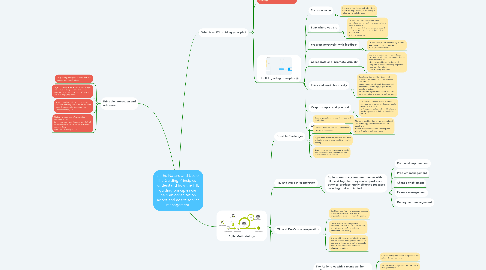
1. Principle interaction and relevance
1.1. ITIL guiding principles, interact with and depend upon each other.
1.2. Organizations therefore should not use just one or two of the principles but should consider the relevance of each of them and how they apply together.
1.3. Not all principles will be critical in every situation, but they should all be reviewed on each occasion to determine how appropriate they are.
1.4. Similarly, making use of appropriate feedback is key to collaboration, and focusing on what will truly be valuable to the customer makes it easier to keep things simple and practical.
2. What is an ITIL guiding principle?
2.1. It is a recommendation that guides an organization in all circumstances, regardless of changes in its goals, strategies, type of work, or management structure. A guiding principle is universal and enduring. But not prescriptive or mandatory.
2.2. It embodies the core messages of ITIL and of service management in general, supporting successful actions and good decisions of all types and at all levels.
2.3. It helps organizations to adopt a service management approach and adapt ITIL guidance to their own specific needs and circumstances and encourage and support organizations in continual improvement at all levels.
2.4. Many of these principles are reflected in many other frameworks, methods, standards, philosophies and/or bodies of knowledge
2.5. The ITIL guiding principles
2.5.1. Focus on value
2.5.1.1. Everything that the organization does needs to map, directly or indirectly, to value for the stakeholders
2.5.2. Start where you are
2.5.2.1. Do not start from scratch and build something new without considering what is already available to be leveraged. The current state should be investigated and observed directly to make sure it is fully understood.
2.5.3. Progress iteratively with feedback
2.5.3.1. Do not attempt to do everything at once. Even huge initiatives must be accomplished iteratively.
2.5.4. Collaborate and promote visibility
2.5.4.1. Working together across boundaries produces results that have greater buy in, more relevance to objectives and better likelihood of long-term success. Achieving objectives requires information, understanding and trust
2.5.5. Think and work holistically
2.5.5.1. Results are delivered to internal and external customers through the effective and efficient management and dynamic integration of information, technology, organization, people, practices, partners and agreements, which should all be coordinated to provide a defined value
2.5.6. Keep it simple and practical
2.5.6.1. If a process, service, action or metric provides no value, or produces no useful outcome, eliminate it. Always use outcome-based thinking to produce practical solutions that deliver results
2.5.7. Optimize and automate
2.5.7.1. Eliminate anything that is truly wasteful and use technology to achieve whatever it is capable of. Human intervention should only happen where it really contributes value.
3. Agile Methodology
3.1. Possible Challenges
3.1.1. Basic organizational capabilities need to be established.
3.1.2. Focus on features and fixes, rather than improving the service.
3.1.3. Higher costs over time, less accurate time estimations and a lower quality of service delivery.
3.1.4. It can result in over-engineered projects that have been built iteratively with no consideration for the overall service.
3.2. ITIL and Agile in cooperation
3.2.1. Agile shares many common themes with ITIL, and together they can support each other to produce highly effective practices including, but not limited to:
3.2.1.1. Continual improvement
3.2.1.2. Problem management
3.2.1.3. Change enablement
3.2.1.4. Release management
3.2.1.5. Deployment management
3.3. ITIL and DevOps in cooperation
3.3.1. DevOps arose from the increasing success of Agile software projects that led organizations to release more frequently
3.3.2. DevOps centers on the process of delivering software to live environments, with a focus on unifying technical operations and delivery.
3.3.3. Anyone with the responsibility for change control, release management and service operations should be a part of the Agile team to ensure that the team work effectively together.
3.4. All coming together
3.4.1. The Agile roles within teams can be multi-purpose And aligned to ITSM roles, for example:
3.4.1.1. Product managers/owners can perform the role of the service owner
3.4.1.2. Scrum masters can perform the role of the change manager
3.4.1.3. Scrum masters are already running retrospectives and ensuring lessons are learned, which can form a part of the wider continual improvement practice.
3.4.2. ITIL and Agile can be great allies. An Agile team focusing on customer needs and satisfaction through the lens of the overall service will deliver greater value in a shorter amount of time.
3.5. Sets of principles compared
3.5.1. .
